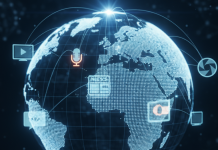The terms “product designer” and “user experience designer” (UX designer) are often used interchangeably because of their similarities. Sometimes, though, they aren’t. Product designers are typically more active in the full design process, while user experience designers prefer to zero in on honing the product’s UX.
The role of the user experience designer: what is it?
At their core, UX designers are concerned with the end user and ensure the product meets their demands. They focus on how the product will be used by its end users, or “users,” during the design process.
From initial research through concept development, a UX designer will lead the charge while focusing firmly on the end user. User testing and prototyping are essential parts of the job, as is putting oneself in the user’s shoes. For the most part, their job is to make sure the product is user-friendly.
Can you define a product designer?
Product design, rooted in industrial design, has existed longer than user experience (UX) design. Despite this, many people, perhaps even product designers themselves, need help picturing what a product designer looks like. In many ways, a product designer’s duties are similar to those of a full-stack designer, a “jack of all trades” proficient in user experience design, user interface design, coding, project management, and (most crucially) problem-solving.
Can Any Parallels Be Drawn Between Product Design and User Experience Design?
First, let’s compare and contrast the responsibilities of UX and product designers. Both design positions focus on making products that are easy for customers to use and satisfy their needs. The similarities between these two design professions are highlighted here.
- Precise degrees of customization for the best possible work environment
- Simple navigation and user-friendliness
- Developing authentic horizons for enhancements, feedback loops, and new features
- Positioning workflow artifacts like icons, menus, and buttons intriguingly.
There is a lot of overlap between UX and product designers’ goals. So, what sets them apart from one another? See for yourself below!
What Distinguishes UX Design from Product Design?
- Techniques of Design
Product designers and user experience (UX) designers use separate processes. UX designers are primarily responsible for articulating the experience of using a product. They do this by developing scenario scripts and creating interaction models for the product. A prototype of the user interface is made. In addition, they track user behavior using A/B testing and email surveys.
- Obligations and Duties
Product and UX designers’ roles and responsibilities are distinct because of their respective foci. While a UX designer’s first interest is user needs, a product designer’s priority is the company’s goals. For instance, a product designer may wonder whether or not the product development process will interfere with the company’s other goals.
- Required Abilities
The primary distinction between product and UX design is the range of talents required for each. The essentials will be comparable, but the details may vary. Here is a comparison of the abilities required for these two subfields.
In addition, a good product designer will be naturally curious. They need to have strong analytical and logical skills. A product designer’s job requires them to think strategically because they are responsible for the planning and design phases. In addition, they need extensive industry and product expertise.
- Equipment
The instruments used to create their work are another defining factor between the two designers. Both will usually use the same design program, including prototype tools. UX designers employ interactive and wireframe design tools, while product designers rely on sketching and mind mapping.
The connection between UX design and product design demonstrates differences in approach despite shared goals. Your professional needs can be met by either one.
- Necessary Skills for Designers
The skills required of product designers and UX designers are the same. In this respect, they are identical:
- Work history relevant to the field of interest
- Expertise in a relevant field of study
- Expertise in every stage (planning, teaching, and implementation) of the design process.
- While the specific skill sets required of these two designers may differ from organization to organization, the ones listed above are universal.
- Designer compensation
Product and user experience designers’ salaries are not standardized across the industry. Designers can expect an ever-changing compensation spectrum. Their pay continues to rise because of the constant demand for their services. Several websites that compile compensation information have found that product designers in the US make much more than UX designers on average.
Conclusion
Designers are gifted with the ability to demonstrate rather than explain. While user interface design, user experience design, and product design differ slightly, they all contribute to the same overarching goal. Businesses can improve their sales, marketing, and product development activities, as well as their bottom line, by concentrating on these factors.
Author Bio:
Prashant Pujara is the CEO of MultiQoS Technologies, an ecommerce-focused Mobile App Development Company where you can Hire Creative and Inventive UI/UX Designers for your business. He is in charge of the company’s commercial and delivery operations and strategic planning and strategy.





